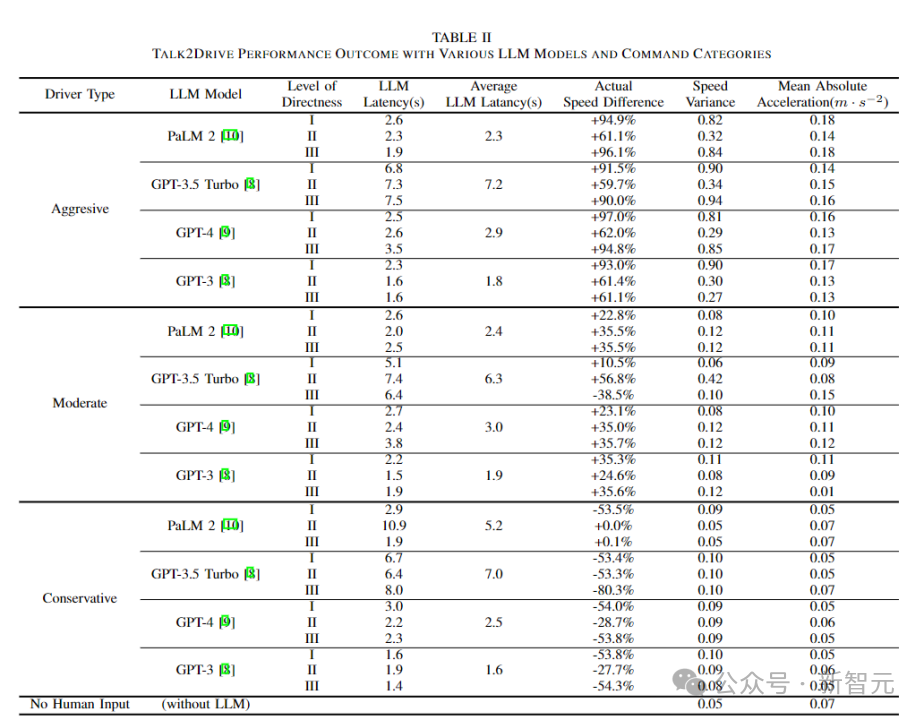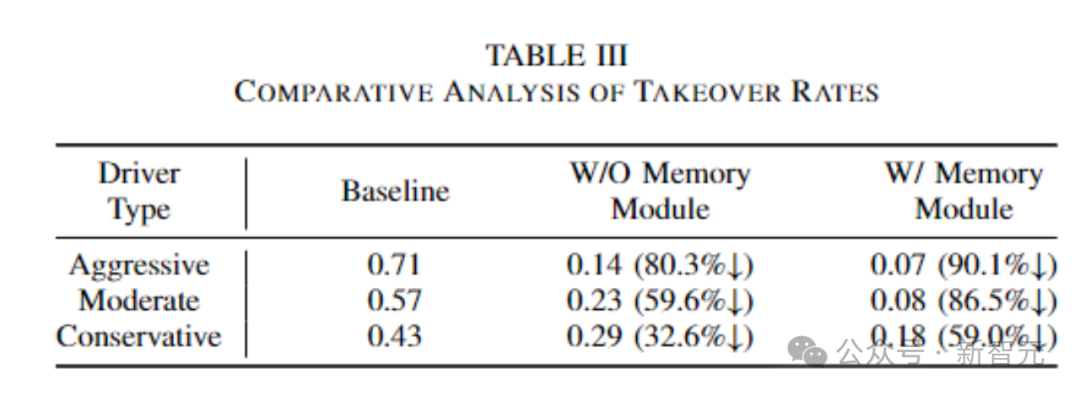 Technology peripherals
Technology peripherals
 AI
AI
 New breakthrough in 'human-vehicle interaction'! Purdue University releases Talk2Drive framework: a learnable/customizable 'command recognition' system
New breakthrough in 'human-vehicle interaction'! Purdue University releases Talk2Drive framework: a learnable/customizable 'command recognition' system
New breakthrough in 'human-vehicle interaction'! Purdue University releases Talk2Drive framework: a learnable/customizable 'command recognition' system
In the latest research from Purdue University’s Digital Twin Laboratory, scientists have adopted a revolutionary technology - using large language models (LLM) to enhance the intelligent command parsing capabilities of autonomous vehicles. This innovation brings new possibilities to the development of autonomous driving technology and is expected to improve vehicles' understanding and response speed to driving instructions.
The key to this technology is the Talk2Drive framework, which aims to use human natural language to control self-driving cars, creating a unique way of human-vehicle interaction.
 Pictures
Pictures
Paper link: https://www.php.cn/link/5f221386d076f4e7f6a97bb3b406c7b8
Project website: purduedigitaltwin.github .io/llm4ad
Through its innovative design, the Talk2Drive framework enables efficient and intuitive interaction between autonomous vehicles and human drivers. The running process of the framework includes key steps such as receiving commands, processing and reasoning, generating executable code, and executing the code and collecting feedback. Through these steps, the framework ensures that autonomous vehicles interact with drivers in a safe and reliable manner and take necessary decisions and actions when needed. The Talk2Drive framework is designed to improve the driving experience and provides important support for the development of autonomous driving technology.
First of all, through advanced speech recognition technology, the framework can accurately receive and convert human verbal commands into text instructions, thereby ensuring accurate understanding of human intentions.
Combined with real-time environmental data from the cloud, such as weather and traffic conditions, LLM will integrate this key contextual information when processing instructions to ensure that the developed driving strategy is both safe and adaptable to current environmental conditions.
 Picture
Picture
LLM uses contextual learning and thought chain prompts to reason about instructions. The generated code not only contains basic driving instructions, but also involves complex driving. behavior and parameters that need to be adjusted in the vehicle's low-level controller. The adjustment of these parameters, such as look-ahead distance and speed, is based on an in-depth understanding of current road conditions and driver needs.
In terms of security, the Talk2Drive framework ensures the safety of autonomous driving behavior by strictly checking the format and parameters of the generated code.
, duration 05:24
In addition, the introduction of the memory module allows the system to record and learn the driver's preferences and feedback, providing the driver with a more personalized driving experience.
The uniqueness of the Talk2Drive framework is its highly personalized service.
By analyzing passengers' verbal instructions, such as "Please take me to my destination as soon as possible, I don't want to make my friends wait too long" or "I feel a little motion sick, please slow down", the framework can accurately understand and Meet the needs of passengers. Every human-vehicle interaction is recorded and used to optimize the system, allowing it to learn passenger preferences and provide a more customized driving experience in the future.
 Picture
Picture
In addition, the experimental results show that for drivers with different driving styles, using different LLM, the self-driving car using the Talk2Drive framework has better performance in actual practice. It performed well in road tests, being able to understand the driver's instructions of varying degrees of obscurity, effectively reducing the need for manual takeover, and being able to adapt to different driving styles and scenarios.
This achievement not only demonstrates the huge potential of large language models in the field of autonomous driving, but also opens up a new path for the future development of autonomous driving technology.
 Picture
Picture
For different types of drivers, using the Talk2Drive framework can significantly reduce the take-over rate during driving.
With the continuous advancement and optimization of technology, the Talk2Drive framework will be able to provide a safer, more comfortable and personalized driving experience for autonomous vehicles. This breakthrough research not only marks the integration and progress of autonomous driving and human-computer interaction, but also heralds the arrival of a people-oriented and more intelligent future transportation era.
Research Team
Purdue University Digital Twin Laboratory is committed to innovation and exploration at the intersection of large language models and autonomous driving.
We welcome researchers, engineers and industry colleagues from all over the world who are interested in this field to visit our project website to jointly promote the development of autonomous driving technology and explore the possibilities of future transportation.
 Picture
Picture
Reference:
The above is the detailed content of New breakthrough in 'human-vehicle interaction'! Purdue University releases Talk2Drive framework: a learnable/customizable 'command recognition' system. For more information, please follow other related articles on the PHP Chinese website!

Hot AI Tools

Undresser.AI Undress
AI-powered app for creating realistic nude photos

AI Clothes Remover
Online AI tool for removing clothes from photos.

Undress AI Tool
Undress images for free

Clothoff.io
AI clothes remover

AI Hentai Generator
Generate AI Hentai for free.

Hot Article

Hot Tools

Notepad++7.3.1
Easy-to-use and free code editor

SublimeText3 Chinese version
Chinese version, very easy to use

Zend Studio 13.0.1
Powerful PHP integrated development environment

Dreamweaver CS6
Visual web development tools

SublimeText3 Mac version
God-level code editing software (SublimeText3)

Hot Topics
 1359
1359
 52
52
 How to evaluate the cost-effectiveness of commercial support for Java frameworks
Jun 05, 2024 pm 05:25 PM
How to evaluate the cost-effectiveness of commercial support for Java frameworks
Jun 05, 2024 pm 05:25 PM
Evaluating the cost/performance of commercial support for a Java framework involves the following steps: Determine the required level of assurance and service level agreement (SLA) guarantees. The experience and expertise of the research support team. Consider additional services such as upgrades, troubleshooting, and performance optimization. Weigh business support costs against risk mitigation and increased efficiency.
 How do the lightweight options of PHP frameworks affect application performance?
Jun 06, 2024 am 10:53 AM
How do the lightweight options of PHP frameworks affect application performance?
Jun 06, 2024 am 10:53 AM
The lightweight PHP framework improves application performance through small size and low resource consumption. Its features include: small size, fast startup, low memory usage, improved response speed and throughput, and reduced resource consumption. Practical case: SlimFramework creates REST API, only 500KB, high responsiveness and high throughput
 How does the learning curve of PHP frameworks compare to other language frameworks?
Jun 06, 2024 pm 12:41 PM
How does the learning curve of PHP frameworks compare to other language frameworks?
Jun 06, 2024 pm 12:41 PM
The learning curve of a PHP framework depends on language proficiency, framework complexity, documentation quality, and community support. The learning curve of PHP frameworks is higher when compared to Python frameworks and lower when compared to Ruby frameworks. Compared to Java frameworks, PHP frameworks have a moderate learning curve but a shorter time to get started.
 Performance comparison of Java frameworks
Jun 04, 2024 pm 03:56 PM
Performance comparison of Java frameworks
Jun 04, 2024 pm 03:56 PM
According to benchmarks, for small, high-performance applications, Quarkus (fast startup, low memory) or Micronaut (TechEmpower excellent) are ideal choices. SpringBoot is suitable for large, full-stack applications, but has slightly slower startup times and memory usage.
 Golang framework documentation best practices
Jun 04, 2024 pm 05:00 PM
Golang framework documentation best practices
Jun 04, 2024 pm 05:00 PM
Writing clear and comprehensive documentation is crucial for the Golang framework. Best practices include following an established documentation style, such as Google's Go Coding Style Guide. Use a clear organizational structure, including headings, subheadings, and lists, and provide navigation. Provides comprehensive and accurate information, including getting started guides, API references, and concepts. Use code examples to illustrate concepts and usage. Keep documentation updated, track changes and document new features. Provide support and community resources such as GitHub issues and forums. Create practical examples, such as API documentation.
 How to choose the best golang framework for different application scenarios
Jun 05, 2024 pm 04:05 PM
How to choose the best golang framework for different application scenarios
Jun 05, 2024 pm 04:05 PM
Choose the best Go framework based on application scenarios: consider application type, language features, performance requirements, and ecosystem. Common Go frameworks: Gin (Web application), Echo (Web service), Fiber (high throughput), gorm (ORM), fasthttp (speed). Practical case: building REST API (Fiber) and interacting with the database (gorm). Choose a framework: choose fasthttp for key performance, Gin/Echo for flexible web applications, and gorm for database interaction.
 Detailed practical explanation of golang framework development: Questions and Answers
Jun 06, 2024 am 10:57 AM
Detailed practical explanation of golang framework development: Questions and Answers
Jun 06, 2024 am 10:57 AM
In Go framework development, common challenges and their solutions are: Error handling: Use the errors package for management, and use middleware to centrally handle errors. Authentication and authorization: Integrate third-party libraries and create custom middleware to check credentials. Concurrency processing: Use goroutines, mutexes, and channels to control resource access. Unit testing: Use gotest packages, mocks, and stubs for isolation, and code coverage tools to ensure sufficiency. Deployment and monitoring: Use Docker containers to package deployments, set up data backups, and track performance and errors with logging and monitoring tools.
 Golang framework performance comparison: metrics for making wise choices
Jun 05, 2024 pm 10:02 PM
Golang framework performance comparison: metrics for making wise choices
Jun 05, 2024 pm 10:02 PM
When choosing a Go framework, key performance indicators (KPIs) include: response time, throughput, concurrency, and resource usage. By benchmarking and comparing frameworks' KPIs, developers can make informed choices based on application needs, taking into account expected load, performance-critical sections, and resource constraints.



